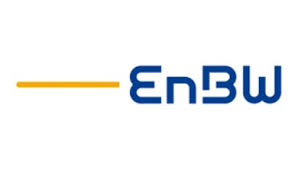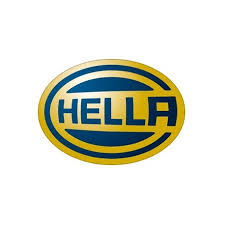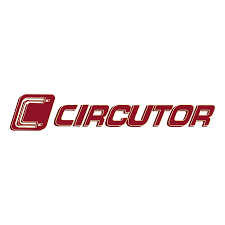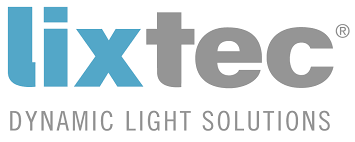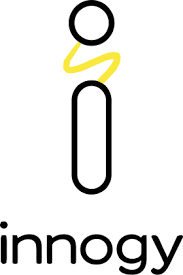Summary
The street lighting market, focusing on public lighting infrastructure encompassing lamp posts, lamps, and other illuminating devices, is undergoing considerable technological advancement and growth. As of 2020, the global market was valued at US$8.3 billion, with an anticipated climb to US$11.6 billion by 2027, growing at a CAGR of 4.9%. The European market, which devotes approximately 14% of its total electricity to lighting, has increasingly embraced energy-saving practices, with Germany serving as a primary example. German municipalities have extensively renovated their street lighting systems to integrate energy-efficient LED technology, signaling a move away from older, mercury-containing bulbs. Despite the energy sector crisis which saw a steep rise in energy prices in 2022, with costs nearly doubling from 0.086 kWh in 2021 to 0.160 kWh in 2022, local German authorities, the principal consumers of street lighting, continue to drive demand through overhauls focusing on energy conservation. Germany, with approximately 9 million streetlights, aims to halve municipal spending on street lighting by adopting better management practices, widespread LED usage, and intelligent lighting control systems. This shift not only contributes to substantial cost savings but also mitigates the environmental impact, aligning with the broader trend towards eco-friendly and smart street lighting solutions in the global market.
German Street Lighting Market Trends and Analysis
In response to energy-saving directives from regional governments, Germany has seen a substantial shift in its street lighting market. Municipalities have committed to extensive overhauls of their aging urban lighting systems, many of which are more than two decades old. As a result, there's been a significant move towards the adoption of more efficient lighting technologies, particularly LED bulbs, which have proven instrumental in reducing energy consumption and costs. This move towards modernization is reflective of both the German government's recommendations for energy conservation and the understanding among cities and towns that investment in LED technology can lead to considerable long-term savings. German locales such as Schnaittach and Oberelsbach have replaced traditional bulbs with LEDs, reaping the benefits of lower energy consumption and reduced CO2 emissions. The trend is such that in Germany, a substantial proportion of street lighting includes at least one LED lamp, and many municipalities have adopted the technology for more than half of their public lighting. Another trend gaining traction is the use of intelligent street lighting solutions, or Smart Street Lighting, which operates on sensors and other technologies to regulate lighting intensity based on pedestrian or vehicular movement. This efficient method is reported to have the potential to halve municipal expenses on street lighting. From a regulatory perspective, European and national laws have had a considerable impact on the market. Regulations have led to the discontinuation of less efficient incandescent and fluorescent lamps, favoring more sustainable products and cycling. The emphasis on ecologically sound policies and technologies is expected to continue shaping the German lighting market moving forward. German cities are the main consumers of street lighting and tend to have higher management costs, particularly in rural areas, resulting in relatively higher public lighting expenditure compared to urban centers. With Germany's urbanization rate at approximately 77.3%, and major cities like Berlin, Hamburg, Munich, and Cologne bustling with activity, the demand for effective street lighting is robust. The market is structured with a variety of roles—electricity producers, lighting equipment manufacturers, and network operators. Local authorities often own their lighting networks, engaging in public-private partnerships to manage their systems. In terms of energy consumption, the German street lighting market represents a notable segment, with an annual spend of between €250 and €500 million on electricity, between €200 and €250 million on procurement of equipment, and a potential €300 million in savings through modernization initiatives. In summary, Germany's street lighting market is experiencing a dynamic evolution towards energy efficiency, with LED adoption and smart lighting solutions at the forefront of.
Illuminating the Path: Key Market Leaders in Street Lighting Arena
As we delve into the intricate ecosystem of the street lighting market, certain organizations emerge as luminaries, collectively shaping the horizon with their innovative solutions and far-reaching presence. Different segments of the market are illuminated by these players, each contributing to the ever-evolving landscape of public illumination.
- Beacon Innovators: Leading Electricity Producers
At the forefront of energy provision, E.ON and RWE stand as titans, generating the electrical backbone that powers the very essence of street lighting infrastructure. Meanwhile, EnBW and Vattenfall not only contribute significantly to the supply of electricity but also demonstrate a commitment to sustainable and eco-friendly energy solutions, aligning with the global trend towards environmental conscientiousness.
- Artisans of Light: Manufacturers of Street Lighting Solutions
The art and science of lighting equipment are exemplified by specialists such as Siteco, whose extensive portfolio in manufacturing street lighting components reflects precision and quality. Further enriching the spectrum, global giants like Osram and Signify are recognized for their diverse array of products, while Hella has firmly established itself with its strong automotive lighting heritage. On another spectrum, Lixtec and Lumega, though comparatively smaller, display a nimble approach tailored to the market's ever-changing demands, punching above their weight class in ingenuity. RP Technik rounds out this segment by blending robust German engineering with a deep understanding of luminous applications.
- Custodians of the Grid: Public Lighting Managers Overseeing
the complex networks that bring light to our cities, Innogy emerges as a pivotal figure, efficiently blending operational management with technological mastery to keep the lights on and the streets safe. Circutor complements this segment, focusing on energy management and innovative solutions to streamline the operational facets of public lighting. Together, these entities form a tapestry of technical prowess, operational excellence, and visionary foresight. They are the custodians of night-time urban landscapes, and their roles in the street lighting market are as crucial as they are diverse, ensuring the paths remain lit for society's secure and sustainable future.
to understand this market
Detailed content
 Inforamtion
Inforamtion
- Number of pages : 30 pages
- Format : Digital and PDF versions
- Last update : 17/02/2023
 Summary and extracts
Summary and extracts
1 Market overview
1.1 Street lighting market definition
The street lighting market refers to all activities related to the energy sector that require the provision of a public lighting service (mainly street lighting) that all municipal authorities must provide in the areas they administer for their citizens.s must provide in the areas they administer for their citizens - for its part, public lighting is defined as all the equipment, items and devices (lamp posts, lamps, lighting towers, illumination, etc.) that make up and function together to provide a public lighting service.) that make up and function together to provide lighting in public places.
In response to the energy-saving recommendations of the Länder governments, municipalities have embarked on major renovations of their urban lighting systems.schnaittach, for example, has decided to replace the bulbs in its street lamps with more efficient LED lights.
Finally, this aging lighting system, some of which is more than 25 years old, has been replaced by more efficient LEDs the OECD estimates that there are some 9 million of them in Germany - is benefiting from new technologies and substantial public investment, making the German street lighting market a high-potential one for equipment manufacturers and network operators.
1.2 A major global market
Worldwide, there are around *** million street lighting luminaires, **% of which are in Asia, **% in Europe and North America, and **% in South America. Global lighting density, in terms of urban population per light point, averages around **, ranging from * in European countries to over ** in Asia-Pacific[***]
Number of light points by country World, ...
1.3 The European market
According todataaFE (***), around **% of total electricity production in Europe - or- i.e. *,*** TWh in **** - is devoted to lighting, representing *** TWh on the European continent. Part of this production is dedicated to public lighting, but a large part is used for domestic and business lighting.
In total, on the European ...
1.4 The German market
According to an article in the German newspaper Zeit, there are almost ** million street lamps in Germany, accounting for around *% of total electricity consumption. In total, this represents a consumption ofaround * TWh according to data of the ***.* TWh consumed in Germany in ****, according to OECD figures world Data.
Adequate lighting of ...
2 Demand analysis
2.1 German cities and their demand drivers
German cities
Unlike Belgium's freeways, which are illuminated at night, this option was only considered once in Germany in ****, before being abandoned. Local authorities are therefore the only consumers of electricity for street lighting.
As we saw earlier, urban consumption varies greatly according to the nature of the city - urban ...
2.2 A desire to save energy with LED bulbs
saving money with LEDs
Under the impetus of the German government and its recommendations, towns and cities have adopted a much more favorable stance towards LEDs, understanding that the investment offers long-term energy savings.
Many of them have therefore decided to renovate their lighting systems, either partially or completely, as in ...
3 Market structure
3.1 Market organization and dynamics
If we look at the breakdown of expenditure on street lighting in local authority budgets, it's clear that network managementseau (***).
Who supplies the electricity?
When it comes to electricity supply, local authorities can turn to the * major companies in the sector : E.ON, RWE, EnBW and Vattenfall.
Who owns the ...
3.2 Production and distribution of electricity and equipment
In the public lighting sector, production is carried out by several types of company:
Large groups, either specialized in the production of lighting equipment (***). They generally have considerable resources, but face a number of difficulties. The SMES whose core business is lighting (***), which have have adapted to new trends and are ...
3.3 Lighting market
Although the subject of this study only concerns public lighting, it is relevant to observe a certain downward trend in final energy consumption for lighting, as shown in the following graph. It shows a **% drop in final consumption in petajoules between **** and ****.
Final energy consumption for lighting Germany, **** to ****, in petajoules Source: ...
4 Offer analysis
4.1 A complex, multi-variant product
Installing a floor lamp
Installing a streetlight involves several steps:
Connecting to the power supply : generally speaking, streetlights are connected to the electrical network via a cable to a general control box, present on every street, linked to a central receiver which can control the boxes. Support system: the installation of ...
4.2 Prices vary according to the technology used
It is possible to detail the prices, lifetimes and average efficiencies of the different types of lamps available in the retail trade for private customers. Prices are taken from French websites, but should not differ from those in Germany, although prices for street lamps are probably higher.
On the other hand, ...
4.3 Towards a more eco-friendly, smarter offering
LED bulbs and eco-friendly technologies
LED
As we've seen, local authorities are upgrading their lighting systems with LEDs, which saves electricity and therefore money in the long term. In ****, * in *** streetlights used LED technology; in ****, this number was * in **, according to the report report. The town of Bensheim, for example, improved ...
5 Regulations
5.1 Regulations that favor the environment
European law
The first regulation on the manufacture of lighting equipment comes from the European Union ecodesign Directive ****/** / EC. Its requirements, as described by the European Commission, do not set absolute values for lamp power consumption, but may require the product to meet them:
Energy-efficient consumption Recyclability Information on how to ...
6 Positioning the players
6.1 Segmentation
- E.ON
- RWE
- EnBW
- Vattenfall
- Siteco
- Signify
- Hella
- Circutor
- Lixtec
- Lumega
- RP-Technik
- Innogy
- Osram
 List of charts
List of charts
- Worldwide street lighting market
- Number of light points by country
- Electricity prices for non-residential customers
- Electricity prices for non-residential customers
- Urbanization rate in Germany
All our studies are available online in PDF format
Take a look at an example of our research on another market!
Latest news
Companies quoted in this study
This study contains a complete overview of the companies in the market, with the latest figures and news for each company. :
 Choosing this study means :
Choosing this study means :
Access to more than 35 hours of work
Our studies are the result of over 35 hours of research and analysis. Using our studies allows you to devote more time and added value to your projects.
Benefit from 6 years' experience and over 1,500 industry reports already produced
Our expertise enables us to produce comprehensive studies in all sectors, including niche and emerging markets.
Our know-how and methodology enable us to produce reports that offer unique value for money.
Access to several thousand articles and paid-for data
Businesscoot has access to all the paid economic press as well as exclusive databases to carry out its market research (over 30,000 articles and private sources).
To enhance our research, our analysts also use web indicators (semrush, trends, etc.) to identify market trends and company strategies. (Consult our paying sources)
Guaranteed support after your purchase
A team dedicated to after-sales service, to guarantee you a high level of satisfaction. +44 238 097 0676
A digital format designed for our users
Not only do you have access to a PDF, but also to a digital version designed for our customers. This version gives you access to sources, data in Excel format and graphics. The content of the study can therefore be easily retrieved and adapted for your specific needs.
 Our offers :
Our offers :
the public lighting market | Germany
- What are the figures on the size and growth of the market?
- What is driving the growth of the market and its evolution?
- What is the positioning of companies in the value chain?
- Data from several dozen databases
5 reports pack (-15%) DE Germany
- 5 reports at €75.6 excluding VAT per study to choose from our German catalogue for 12 months
- Save 15% on additional studies purchased
- Choose to be refunded any unused credit at the end of the 12-month period (duration of the pack)
See the terms and conditions of the pack and the refund of unused credit.





 Wind power, nuclear power: German power producer RWE's solutions for overcoming the crisis - 18/10/2023
Wind power, nuclear power: German power producer RWE's solutions for overcoming the crisis - 18/10/2023

